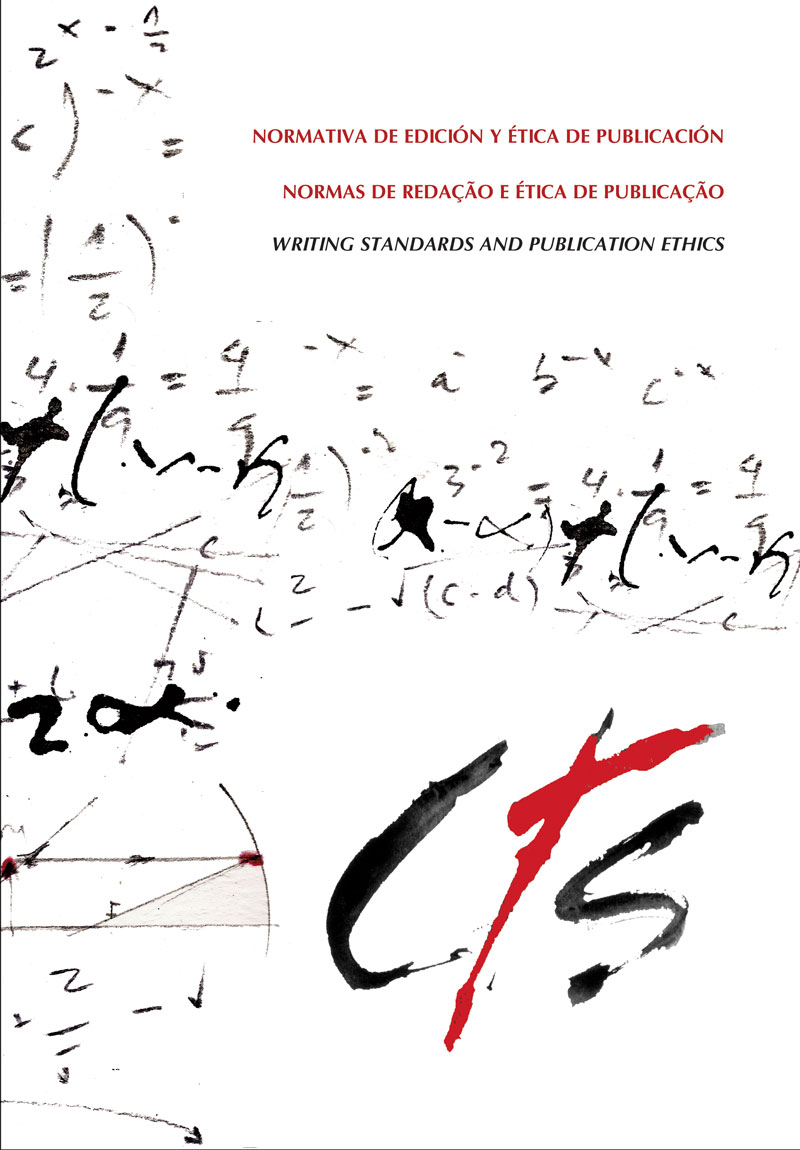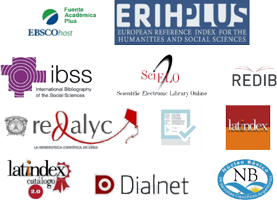Tensions and Philosophical Longings in Human-Robot Interactions
An Ethical and Postphenomenological Approach to the Problem of Android Alterity and its Place in the Future Society
DOI:
https://doi.org/10.52712/issn.1850-0013-719Keywords:
human-robot interaction, androids, postphenomenology, roboethics, technological alterityAbstract
This article studies the problem of otherness in human-robot interactions, especially in the figure of the android. Thinking of this entity as a “you” with its particularities brings with it a series of phenomenological and ethical problems that are strongly linked to the question about the place of human beings in the framework of future technological development. The appearance of this otherness can modify the current conceptions of society, life and feelings, among other characteristics. In this sense, the main premise of this article is to offer a study that provides answers, from a philosophical point of view, to the tensions that may emerge between this new social agent and the subjects.
Downloads
References
Admoni., H. & Scassellati, B. (2017). Social Eye Gaze in Human-Robot Interaction: A Review. Journal of Human-Robot Interaction, 6(1), 25-63. Recuperado de: https://scazlab.yale.edu/sites/default/files/files/273-2310-1-PB.pdf.
Andrade, R. (2023). Problemas filosóficos de la inteligencia artificial general: ontología, conflictos ético-políticos y astrobiología. Argumentos de razón técnica, 26, 275-302. DOI: https://doi.org/10.12795/Argumentos/2023.i26.10.
Andtfolk, M., Nyholm, L., Eide, H., Rauhala, A. & Fagerström, L. (2021). Attitudes toward the use of humanoid robots in healthcare—a cross-sectional study. AI & Society, 37(5), 1739-1748. DOI: https://www.doi.org/10.1007/s00146-021-01271-4.
Bartneck, C., Balpaeme, T., Eyssel, F., Kanda, T., Keijsers, M. & Šabanović, S. (2020). Human-Robot Interaction. An Introduction. Cambridge: Cambridge University Press.
Buber, M. (2013). Yo y tú y otros ensayos. Buenos Aires: Prometeo Editorial.
Cappuccio, M. L., Galliott, J. C., Eyssel, F. & Lanteri, A. (2023). Autonomous Systems and Technology Resistance: New Tools for Monitoring Acceptance, Trust, and Tolerance. International Journal of Social Robotics, 16, 1-25. DOI: www.doi.org/10.1007/s12369-023-01065-2.
Cappuccio, M. L., Galliott, J. C. & Sandoval, E. B. (2021). Mapping Meaning and Purpose in Human-Robot Teams: Anthropomorphic Agents in Military Operations. The Philosophical Journal of Conflict and Violence, V(1), 72-94. Recuperado de: https://trivent-publishing.eu/img/cms/5-%20Massimiliano%20L-%20Cappuccio%20et%20al-.pdf.
Coeckelbergh, M. (2021a). Ética de la inteligencia artificial. Madrid: Ediciones Cátedra.
Coeckelbergh, M. (2021b). How to Use Virtue Ethics for Thinking About the Moral Standing of Social Robots: A Relational Interpretation in Terms of Practices, Habits, and Performance. International Journal of Social Robotics, 13, 31-40. DOI: https://doi.org/10.1007/s12369-020-00707-z.
Feil-Seifer, D. & Matarić, M. J. (2009). Human-Robot Interaction. En R. A. Meyers (Ed.), Encyclopedia of Complexity and Systems Science (4643-4659). Nueva York: Springer Science+Business Media.
Fernández, N. (2022). Coevolución. En D. Parente, A. Berti & C. Celis (Coords.), Glosario de filosofía de la técnica (95-98). Adrogué: Editorial La Cebra.
Ferro, F. (2023). Meeting the Gaze of the Robot: A Phenomenological Analysis on Human-Robot Empathy. Scenari, 17(2), 215-229. Recuperado de: https://philpapers.org/archive/FERMTG-2.pdf.
Fitzgerald, M., Boddy, A. & Baum, S. D. (2020). 2020 Survey of Artificial General Intelligence Projects for Ethics, Risk, and Policy. Global Catastrophic Institute. Technical Report, 1-156.
Gunkel, D. J. (2020). Perspectives on Ethics of AI: Philosophy. En M. D. Dubber, F. Pasquale & S. Das (Eds.), Ethics of IA (539-554). Nueva York: Oxford University Press.
Heras-Escribano, M. (2019). The Philosophy of Affordances. Cham: Palgrave Macmillan. DOI: https://doi.org/10.1007/978-3-319-98830-6.
Heyndels, S. (2023). Technology and Neutrality. Philosophy and Technology, 36, 1-22. DOI: https://www.doi.org/10.1007/s13347-023-00672-1.
Ihde, D. (2009). Postphenomenology and Technoscience. The Peking University Lectures. Nueva York: State University of New York Press.
Kanemitsu, H. (2019). The Robot as Other: A Postphenomenological Perspective. Philosophical Inquiries, 7(1), 51-61. DOI: https://doi.org/10.4454/philinq.v7i1.238.
Kant, I. (2011). Crítica de la razón práctica. México: Fondo de Cultura Económica.
Liberati, N. (2015). Technology, Phenomenology and the Everyday World: A Phenomenological Analysis on How Technologies Mould Our World. Human Studies, 39, 189-216.
Lumer, E. & Buschmeier, H. (2023). Should Robots be Polite? Expectations About Politeness in Human-Robot Interaction. Frontiers in Robotics and AI, 10, 1-14. DOI: http://www.doi.org/10.3389/frobt.2023.1242127.
Maki, S. (2024). Between the Authentic and the Artificial: A Thought Experiment on Kokoro. En K. Atsushi, N. Keiichi & L. W. Keung (Eds.), Tetsugaku Companion to Feeling (149-165). Cham: Springer Nature Switzerland AG.
Matthews, G., Panganiban, A. P., Lin, J., Long, M. & Schwing, M. (2021). Super-machines or Sub-humans: Mental Models and Trust in Intelligent Autonomous Systems. En C. S. Nam & J. B. Lyons (Eds.), Trust in Human-Robot Interaction (59-82). Londres: Academic Press.
Mendes Rocha, R. (2019). The Special Composition Question and Natural Fusion. En J. D. Dantas, E. Erickson & S. Molick (Eds.), Proceedings of the 3rd Filomena Workshop (78-87). Rio Grande do Norte: PPGFIL.
Mihn Trieu, N. & Truong Thinh, N. (2023). A Comprehensive Review: Interaction of Appearance and Behavior, Artificial Skin, and Humanoid Robot. Journal of Robotics, 1-16. DOI: https://doi.org/10.1155/2023/5589845.
Mykhailov, D. & Liberati, N. (2023). Back to the technologies themselves: phenomenological turn within postphenomenology. Postphenomenology and the Cognitive Sciences, 1-20. DOI: www.doi.org/10.1007/s11097-023-09905-2.
Mykhailov, D. (2020). The Phenomenological Roots of Technological Intentionality: A Postphenomenology Perspective. Frontiers of Philosophy in China, 15(4), 612-635. DOI: https://doi.org/10.3868/S030-009-020-0035-6.
Rodríguez, M. P. (2022). Individuo técnico. En D. Parente, A. Berti & C. Celis (Coords.), Glosario de filosofía de la técnica (264-268). Adrogué: Editorial La Cebra.
Rosenberg, R. & Verbeek, P. P. (2015). A Field Guide to Postphenomenology. En R. Rosenberg & P. P. Verbeek (Eds.), Postphenomenological Investigations. Essays on Human-Technology Relations (7-42). Londres: Lexington Books.
Sattig, T. (2021). Material Objects. Cambridge: Cambridge University Press.
Schellen, E., Bossi, F. & Wykowska, A. (2021). Robot Gaze Behavior Affects Honesty in Human-Robot Interaction. Frontiers in Artificial Intelligence, 4, 1-9. DOI: http://www.doi.org/10.3389/frai.2021.663190.
Schlick, J. M. (2022). On Technical Alterity. Foundations of Science, 27, 515-520. DOI: https://doi.org/10.1007/s10699-020-09771-0.
Sun, R. (2014). Connectionism and Neural Networks. En K. Frankish & W. M. Ramsey (Eds.), The Cambridge Handbook of Artificial Intelligence (108-127). Cambridge: Cambridge University Press.
Tripathi, A. K. (2017). Bodies and Technologies: Transformation of Human Experience. Rivista Internazionale di Filosofia Contemporanea, V(1-2), 100-114. Recuperado de: https://www.rivistaquadranti.eu/riviste/06/Tripathi_05.pdf.
Verbeek, P. P. (2011). Moralizing Technology. Understanding and Designing the Morality of Things. Chicago: The University of Chicago Press.
Downloads
Published
How to Cite
Issue
Section
License
Copyright (c) 2024 CC Attribution 4.0

This work is licensed under a Creative Commons Attribution 4.0 International License.
All CTS's issues and academic articles are under a CC-BY license.
Since 2007, CTS has provided open and free access to all its contents, including the complete archive of its quarterly edition and the different products presented in its electronic platform. This decision is based on the belief that offering free access to published materials helps to build a greater and better exchange of knowledge.
In turn, for the quarterly edition, CTS allows institutional and thematic repositories, as well as personal web pages, to self-archive articles in their post-print or editorial version, immediately after the publication of the final version of each issue and under the condition that a link to the original source will be incorporated into the self-archive.











